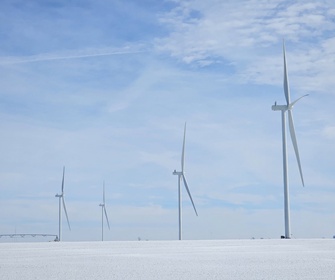In support of the Floating Offshore Wind Energy Earthshot, the US Department of Energy (DOE) has announced the winners of Phase Two of the Floating Offshore Wind Readiness (FLOWIN) Prize.
Competing teams began with a proven floating offshore wind energy substructure design and, in Phase One, developed pathways to manufacture their systems for deployment in GW-scale offshore wind farms. Each of the five Phase Two winners will receive a cash prize of $450,000 and a $100,000 voucher that can be used for technical support at DOE national laboratories.
The Phase Two winners are as follows:
FloatHOME (Emeryville, California): FloatHOME’s triangular platform, WindFloat, now in its fourth generation, provides deep-water stability through unique design features, including a system that absorbs wave movement. This platform has been fully modularised to enable differing execution plan options, allowing for streamlined manufacturing and adaptable installation.
PelaStar (Seattle, Washington): PelaStar’s floating platform is a lightweight tension leg-platform design that minimises environmental impacts while maintaining cost savings as well as manufacturing and installation flexibility.
Technip Energies (Houston, Texas): Technip Energies’ INO15 design is a semi-submersible, three-column floating platform. This design can be assembled at ports at low cost and is robust enough to withstand harsh operating environments.
Tetra Triple-One (Boston, Massachusetts): The Tetra Triple-One floating platform uses a building-block arrangement, which involves fully producing the parts needed in an industrialised manufacturing environment and then transporting them to the assembly site. This makes port-side construction possible for a range of platform configurations, turbine sizes, and site conditions.
WHEEL US (Coral Gables, Florida): Incorporating tanks for buoyancy and balance, the ultra-stable WHEEL floating platform design can temporarily act as a barge platform, allowing it to be assembled with the wind turbine near shore and towed to sea. It is compact in size to reduce both costs and carbon footprint.
Phase Two winners are now eligible to compete in the final phase, in which teams will complete location-specific implementation pathways for manufacturing that developers could use to deploy floating offshore wind technologies in the United States. At the end of Phase Three, up to three winners will receive a $900,000 cash prize.








